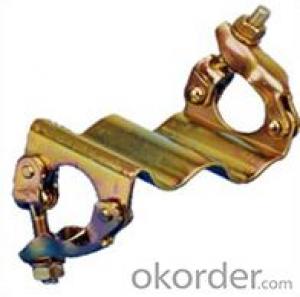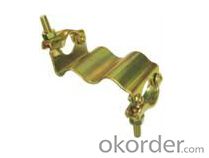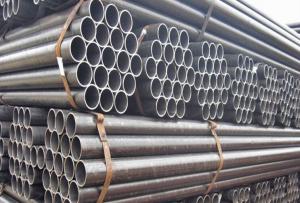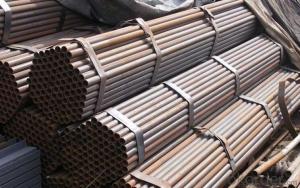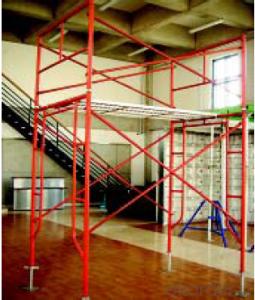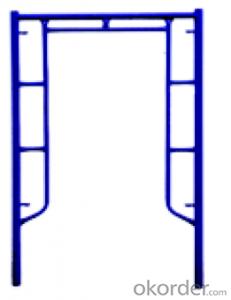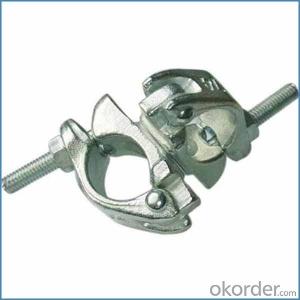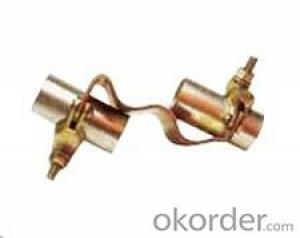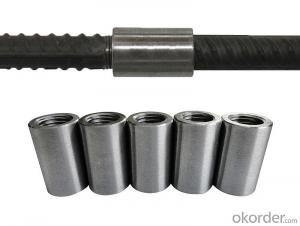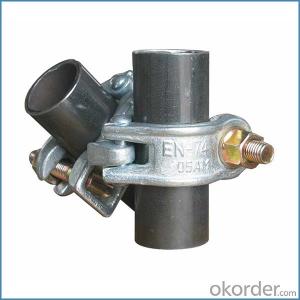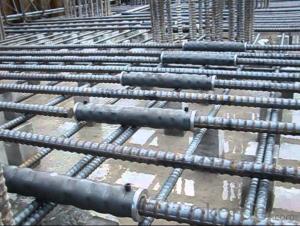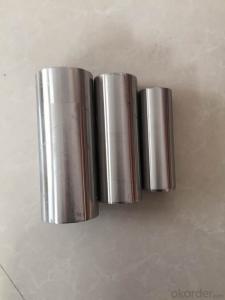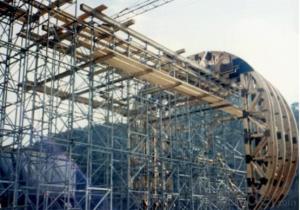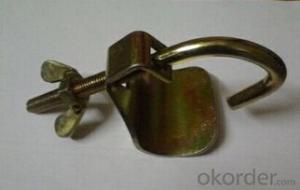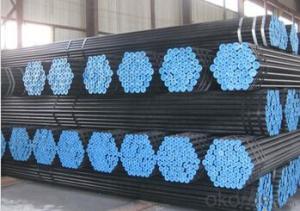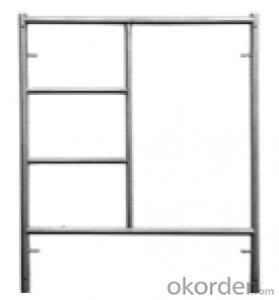Scaffolnding Steel Tube Type Roofing Coupler
- Loading Port:
- China Main Port
- Payment Terms:
- TT OR LC
- Min Order Qty:
- -
- Supply Capability:
- -
OKorder Service Pledge
OKorder Financial Service
You Might Also Like
Quick Details
| Place of Origin: | Model Number: | ||||
| Type: | Material: | Size: | |||
| Surface Treatment: | Standard: | Weight: |
Packaging & Delivery
| Packaging Detail: | bags then on steel pallets or as your request. |
| Delivery Detail: | according to the order quantity |
Specifications
Roofing Coupler
1. BS1139/EN74 -1.
2. Clear marking.
3. Perfect surface.
4. Timely delivery.
1. Description of Roofing Coupler
Material | Q235/Q345/etc |
Dimensions | 48.3*48.3 or as your demands |
Surface | Hot-dip galvanization/ electro galvanization /painted /or as your request |
Standard | EN74,BS1139, |
Fastener Grade | class8.8 |
Weight | 1.2kg/ as your requirement |
Feature | 1.Good bearing capacity 2.Durable & stable |
Note | OEM service is available |
MOQ | 1000pieces |
Package | woven bags with steel pallets, or as your request |
Payment Terms | TT, L/C, or as our agreement. |
Delivery Time | According to order quantity. |
- Q: What chapter in the Scarlet Letter does Dimmesdale,Pearl, and Hester stand on the scaffold together?
- It is the chapter right before the last one i think. I just know its one of the last parts of the book besides the resolution
- Q: Are there any specific guidelines for inspecting steel tube couplers during scaffolding erection?
- Yes, there are specific guidelines for inspecting steel tube couplers during scaffolding erection. The following guidelines should be followed: 1. Visual Inspection: Inspect each steel tube coupler for any signs of damage, cracks, or deformities. Check for any signs of wear or corrosion. 2. Size and Fit: Ensure that the steel tube couplers are the correct size and fit properly with the tubes they are connecting. The couplers should securely hold the tubes in place without any gaps or looseness. 3. Tightness: Check the tightness of the couplers by trying to rotate them. They should be securely tightened and not move or rotate easily. 4. Proper Alignment: Verify that the couplers are aligned correctly and perpendicular to the tubes they are joining. Misalignment can weaken the structure and compromise safety. 5. Load Capacity: Ensure that the steel tube couplers are rated for the specific load requirements of the scaffolding. Check the manufacturer's specifications to confirm their load capacity. 6. Documentation: Maintain records of inspections, including the date, location, and condition of each steel tube coupler. This documentation will help in tracking inspections and identifying any potential issues. 7. Regular Inspections: Perform regular inspections throughout the duration of the scaffolding erection to identify any changes or issues that may arise over time. By following these guidelines, it is possible to ensure the safety and integrity of the steel tube couplers during scaffolding erection.
- Q: Are there any specific guidelines for the safe use of steel tube couplers in scaffolding near areas with excessive noise or vibrations?
- Yes, there are specific guidelines for the safe use of steel tube couplers in scaffolding near areas with excessive noise or vibrations. When working in areas with excessive noise or vibrations, it is important to ensure the stability and integrity of the scaffold structure. Here are some guidelines to follow: 1. Choose appropriate steel tube couplers: Select couplers that are specifically designed for scaffolding applications and can withstand high levels of noise or vibrations. Make sure they meet the required safety standards and are approved for use in such conditions. 2. Conduct a risk assessment: Before setting up the scaffold, assess the noise and vibration levels in the area. Identify potential hazards and evaluate the structural requirements based on these factors. 3. Use sturdy scaffolding materials: Opt for high-quality steel tubes that can withstand excessive noise and vibrations without compromising the integrity of the scaffold. Ensure that the tubes are in good condition and properly maintained. 4. Secure the connections: Ensure that all couplers are tightly secured and locked in place. Regularly inspect the connections to detect any signs of loosening or movement caused by noise or vibrations. Reinforce connections if necessary. 5. Consider additional stabilization measures: In areas with excessive noise or vibrations, it may be necessary to provide additional stabilization to the scaffold. This can include using diagonal braces or tie-ins to enhance the stability of the structure. 6. Train workers and provide appropriate PPE: Educate workers on the potential risks associated with noise and vibrations and provide them with proper training on safe work practices. Also, ensure that workers have access to suitable personal protective equipment (PPE) to minimize exposure to excessive noise or vibrations. 7. Monitor noise and vibration levels: Implement a monitoring system to regularly assess and measure noise and vibration levels in the vicinity of the scaffold. This will help identify any changes or potential risks that may require adjustments to the scaffold setup. By following these guidelines, scaffolding near areas with excessive noise or vibrations can be safely utilized, ensuring the stability and safety of the structure and the workers involved.
- Q: What are the maximum heights that can be achieved using steel tube couplers?
- The height that can be reached using steel tube couplers relies on several factors, including the size and strength of the steel tubes, the structure's design and stability, and the load requirements for a particular application. In construction and scaffolding projects, steel tube couplers are commonly employed to connect steel tubes and create a secure framework. The height achieved with steel tube couplers is determined by the load-bearing capacity of the couplers, the strength of the steel tubes, and the overall stability of the structure. Generally, steel tube couplers are designed to support a specific amount of weight and ensure stability in the structure. The maximum height attainable with steel tube couplers relies on the load capacity of the couplers and the strength of the steel tubes. To ensure the height remains within safe limits set by industry standards and regulations, it is essential to consult engineering guidelines and specifications. Moreover, other factors like wind loads, seismic conditions, and safety considerations can influence the maximum height achievable with steel tube couplers. Conducting engineering calculations and structural analysis is necessary to assess the stability and integrity of the structure at greater heights. Ultimately, the maximum height achievable with steel tube couplers varies according to the specific application, design, and engineering considerations. It is crucial to collaborate with experienced professionals and adhere to industry guidelines to guarantee the safety and stability of the structure.
- Q: How do you ensure that steel tube couplers are properly secured in scaffolding?
- To ensure that steel tube couplers are properly secured in scaffolding, it is important to follow a few key steps. Firstly, the couplers should be inspected for any damage or defects before installation. Secondly, the couplers should be tightly tightened using appropriate tools to ensure a secure fit. Additionally, it is crucial to regularly inspect the couplers during use to ensure they remain properly secured. Following these steps will help maintain the safety and stability of the scaffolding structure.
- Q: Can steel tube couplers be used for curved scaffolding structures?
- Yes, steel tube couplers can be used for curved scaffolding structures. These couplers are designed to connect and secure steel tubes at various angles, allowing for flexible and customizable scaffolding configurations, including curved structures.
- Q: Can steel tube couplers be used in scaffolding projects with uneven ground?
- Yes, steel tube couplers can be used in scaffolding projects with uneven ground. They are designed to provide a secure and stable connection between scaffolding tubes, allowing for flexibility in adjusting the height and width of the scaffolding structure to accommodate uneven terrain.
- Q: Are steel tube couplers compatible with scaffolding access gates and openings?
- Indeed, scaffolding access gates and openings can be paired with steel tube couplers. These couplers are widely employed in scaffolding systems for the purpose of joining steel tubes and constructing the framework. They are specifically engineered to firmly secure the tubes, guaranteeing stability and safety. By utilizing these couplers, one can affix scaffolding access gates and openings to the primary scaffolding structure, creating a dependable and steady passage for entering and exiting. It is crucial to ensure the appropriate installation of the couplers and their compatibility with the precise dimensions and type of steel tubes employed in the scaffolding system.
- Q: Are steel tube couplers suitable for both temporary and permanent scaffolding structures?
- Steel tube couplers are appropriate for both temporary and permanent scaffolding structures. These couplers have been specifically engineered to establish a reliable and secure connection between scaffold tubes, guaranteeing the stability and integrity of the scaffolding system. Constructed from premium-grade steel, these couplers possess exceptional strength and durability, rendering them suitable for extended use in permanent scaffolding structures. Furthermore, steel tube couplers are also well-suited for temporary scaffolding structures. They can be effortlessly installed and removed, allowing for swift assembly and disassembly of the scaffolding as required. The couplers can be easily adjusted and repositioned to accommodate a variety of scaffolding configurations, making them versatile for temporary scaffolding projects like construction, maintenance, and repairs. Not only that, steel tube couplers conform to industry standards and regulations for scaffolding safety. They have been meticulously designed to deliver a secure connection capable of withstanding the load and stress requirements of scaffolding structures. Couplers have also undergone rigorous testing to assess their resistance to corrosion and environmental factors, ensuring their reliability even in adverse conditions. In summary, steel tube couplers are an ideal choice for both temporary and permanent scaffolding structures due to their robustness, durability, versatility, and adherence to safety standards. Whether it is a short-term endeavor or a long-term installation, these couplers can provide the necessary stability and support for scaffolding structures.
- Q: What are the common safety regulations for using steel tube couplers in scaffolding?
- When using steel tube couplers in scaffolding, there are several safety regulations that must be followed to ensure worker safety and prevent accidents on construction sites. 1. Installation: Proper installation of steel tube couplers is essential. It involves securely fastening the couplers to the scaffolding tubes, following the manufacturer's instructions for a tight fit and proper alignment. 2. Load capacity: The load capacity of the steel tube couplers should be considered. It is important not to exceed the maximum load capacity and to regularly inspect the couplers for any signs of damage or wear that could affect their strength. 3. Inspections: Regular inspections should be conducted to identify any damage to the steel tube couplers, such as cracks or corrosion. Any damaged couplers should be replaced immediately to maintain the scaffolding's structural integrity. 4. Proper use: Steel tube couplers should only be used for their intended purpose, which is securely connecting scaffolding tubes. They should not be used in any other way that could compromise their stability and safety. 5. Fall protection: Workers using scaffolding should always wear appropriate fall protection equipment, including safety harnesses and lanyards. This is crucial for preventing falls from heights and ensuring worker safety. 6. Training and supervision: Workers using steel tube couplers in scaffolding should receive proper training on their correct usage and safety protocols. They should also be supervised by a qualified individual to ensure compliance with all safety regulations. By adhering to these common safety regulations, the risk of accidents and injuries related to the use of steel tube couplers in scaffolding can be significantly reduced. It is essential for all workers and supervisors to prioritize safety and take necessary precautions to create a secure working environment.
Send your message to us
Scaffolnding Steel Tube Type Roofing Coupler
- Loading Port:
- China Main Port
- Payment Terms:
- TT OR LC
- Min Order Qty:
- -
- Supply Capability:
- -
OKorder Service Pledge
OKorder Financial Service
Similar products
Hot products
Hot Searches
Related keywords
